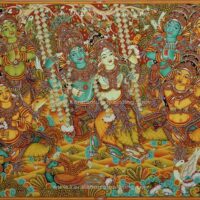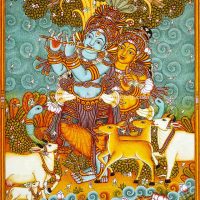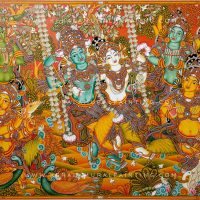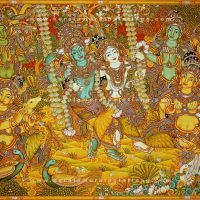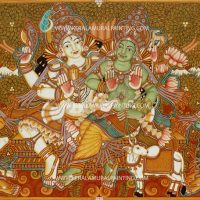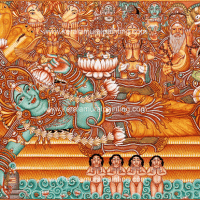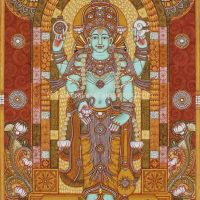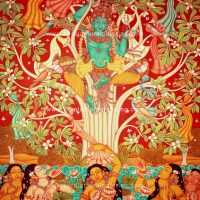Murals constitute the pictorial representation of mythological and legendary incidents of any region, thus of the paintings done for aesthetic purposes, alone. Basically they belong to the fresco style with several regional variations and specificity. Searching for the roots of murals in Kerala takes us back in to the 7th, 8th centuries. They function as a sort of ‘dynamic theater stills’, elucidating characters and episodes, preserving a whole lot of traditions always in communion with the past, as brilliant picturesque reminder of our ethos.
Pigments and glues prepared from materials obtained from nature, purified and mixed in definite proportions are applied on freshly prepared walls of temples, churches, palaces and houses. Brushes made of natural materials are used to apply the prepared pigments in dot and lines, over light washes if needed, to compose each figure. The resilience of the pigments offers strength and stability to the painting assuring long life to the work done. Anatomy of characters, including animals trees etc, are represented in a regionally stylized form. One panel might hold several scenes Separated by specific lines (manimala). Yellow, red, green, white and black are the most prominent hues seen in the murals of Kerala. Deities when drawn are mostly based on the invocatory verses found in the relevant ancient scriptures. When such a work is undertaken, a muralist is instructed to follow certain Observances and meditate up on th eproposed form. The various components in a panel remind us of iconography symbols as well as the patterns and figures done on floor using powdered natural pigments (kalamezhuthu), pointing towards the evolution of the mural style.


































